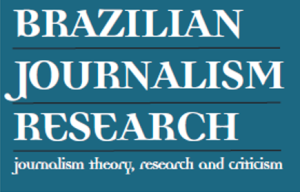Call for Papers for the V. 14, n. 1, April-July 2018
Journalism and Gender Studies
Editors: Cláudia Lago (School of Communications and Arts, University of São Paulo – SBPJor) Ana Carolina Temer (Postgraduate Program in Communication, Information and Communication Department, Federal University of Goiás – Alaic); Marli dos Santos (Postgraduate Program in Social Communication, São Paulo Methodist University – Alaic) Sadia Jamil (Journalism Research and Education Section of IAMCR). Media is an unparalleled space for the construction and delivery of Gender representation, as well as practice and norms about sexuality. This centrality, all over the world, to a greater or lesser extent, is exercised in order to reinforce gender stereotypes, adopting perspectives that favor male and heteronormativity. From this assumption, numerous initiatives at a global level have been adopted not only to identify and monitor the diversions operated by media coverage, but also to point out other possibilities and advances, such as the World Association for Christian Communication (WACC) Global Media Monitoring project, or Unesco’s Global Alliance on Media and Gender (GAMAP), which aims to promote gender equality in the media From the point of view of numerous
Media is an unparalleled space for the construction and delivery of Gender representation, as well as practice and norms about sexuality. This centrality, all over the world, to a greater or lesser extent, is exercised in order to reinforce gender stereotypes, adopting perspectives that favor male and heteronormativity. From this assumption, numerous initiatives at a global level have been adopted not only to identify and monitor the diversions operated by media coverage, but also to point out other possibilities and advances, such as the World Association for Christian Communication (WACC) Global Media Monitoring project, or Unesco’s Global Alliance on Media and Gender (GAMAP), which aims to promote gender equality in the media From the point of view of numerous
From this assumption, numerous initiatives at a global level have been adopted not only to identify and monitor the diversions operated by media coverage, but also to point out other possibilities and advances, such as the World Association for Christian Communication (WACC) Global Media Monitoring project, or Unesco’s Global Alliance on Media and Gender (GAMAP), which aims to promote gender equality in the media.
From the point of view of numerous researches, there are also the initiatives and movements that deal with gender issues in the media in general and in Journalism in particular, although it seems that most of the work starts from areas other than Communication. To stimulate and highlight this crucial issue, the Brazilian Association of Journalism Researchers (SBPJor) joins the Journalism Working Group of the Latin American Association of Communication Researchers (Journalism-Alaic WG) and the Journalism Research and Education Section of the International Association for Media and Communication Research (JRE of IAMCR) to promote the Dossier Gender Studies in Journalism.
The proposal is to welcome papers that focus on Gender issues in their complexity, with research that considers the adoption or absence of a gender perspective in journalistic content, and how this contributes to reinforcing gender, racial and ethnic stereotypes in their crisscrossing. Work that focus on how journalism frames, selects, presents, gender violence, feminicide, rape culture, homo and transphobia, as well as texts that reflect the journalism agenda and gender issues and intersectionality and aspects that make it difficult or impossible to see the discussions on gender identities and sexualities are stimulated. Work on the impacts on the underrepresentation of gender diversity in press production, or on gender and sexuality prejudices in professional practice, as well as texts dealing with everyday representations involving gender, is also expected. Finally, work that analyzes new forms of representation and journalistic positioning in the face of Gender issues, with initiatives to confront stereotypes and construct an inclusive and nongeneralized journalism is stimulated.
Articles, from 40,000 to 55,000 characters with spaces, must be submitted by November 1 st, 2017.
As Brazilian Journalism Research publishes two versions of each issue (in Portuguese/Spanish and in English), the authors of the articles accepted in Spanish or Portuguese should provide the English translation. In the same way, the authors of texts accepted in English should send a version in Portuguese or Spanish.
The articles should be sent exclusively through the SEER/OJS electronic system available on the website of the journal.
If in doubt, please, send an email to bjr@gmail.com.
Deadline for article submission: November 1st, 2017
Notification of acceptance: December 15th, 2017
Deadline for submission of the final version in English and Portuguese/Spanish with revision and additional information suggested by the editors: January 30, 2018
Published: April 30th, 2018

